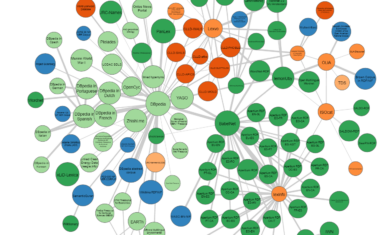With an educational background in economics and statistics, Divya Parmar began his professional career working in IT consulting, primarily handling systems implementation. He knew he wanted to transition into data analytics, but his experience wasn’t enough to get him the kind of job he wanted.
After repeatedly working on consulting projects he wasn’t excited about, Divya decided it was time to change his career trajectory. He quickly discovered Springboard’s Introduction to Data Science course, which stood out to him because of the focus on mentorship and capstone projects.
Related: 6 Data Science Projects for Inspiration
“The opportunity to have a weekly one-on-one with an established data scientist took me ‘behind the curtain’ of how they approach problems,” he said. “Plus, the capstone project gave me motivation to see an analysis through to completion.”
That capstone work allowed Divya to practice the different steps in the data science process: assessing the problem, manipulating the data, and delivering actionable insights to stakeholders.
Since Springboard allows data science students to select a topic for their capstone projects, Divya went with one of his passions: the NFL. He decided to analyze the efficiency of different offensive plays in various tactical situations.
Get To Know Other Data Science Students
Peter Liu
Business Intelligence Analyst at Indeed
George Mendoza
Lead Solutions Manager at Hypergiant
Mengqin (Cassie) Gong
Data Scientist at Whatsapp
The following is an excerpt from Divya’s capstone project write-up:
To investigate 3rd down behavior, I obtained play-by-play data from Armchair Analysis; the dataset was every play from the first eight weeks of this NFL season. Since the dataset was clean, and we know that 80 percent of the data analysis process is cleaning, I was able to focus on the essential data manipulation to create the data frames and graphs for my analysis. I used R (an essential programming language in the data science area for statistical analysis) as my programming language of choice for analysis, as it is open source and has thousands of libraries that allow for vast functionality.
I loaded in my csv file into RStudio (my software for the analysis). First, I wanted to look at offensive drives themselves, so I generated a drive number for each drive and attached it to individual plays dataset. With that, I could see the length of each drive based on the count of each drive number.
Then, I moved on to my main analysis of 3rd downplays. I created a new data frame, which only included 3rd down plays which were a run or pass (excluding field goals, penalties, etc). I added a new categorical column named “Distance,” which signified how many yards a team had to go to convert the first down. Using conventional NFL definitions, I decided on this:

I then plotted conversion rate versus number of attempts, essentially an efficiency trade-off chart, for each distance and play type (run or pass) combination. I added vertical confidence bands, derived from the conversion rate (p) and number of attempts (n).
In addition, I investigated a couple more things. I looked at conversion rate on 3rd down based on yards to go until the first down (further would mean lower conversion), and if that conversion was different based on play type. I also looked at location on the field relative to the end zone (measured by the variable yfog aka yards from own goal-line).
To view Divya’s complete project from start to finish, here is his write up along with code hosted on GitHub utilized to clean and analyze the data.
Divya found the capstone project the most challenging part of the course. To work through it, he was in constant communication with his mentor, figuring out how to adjust his approach and derive better insights.
“My mentor helped me define my questions, improve my visualizations and statistical testing, and present my findings in a coherent way,” he said.
Upon completing the course, Divya started working at KIXEYE as a data analyst. In the role, he used SQL and dashboards to provide the mobile video game development team deeper insights about players. Currently, Divya works as a product analyst at Anki, a consumer robotics company.
Since you’re here…
Curious about a career in data science? Experiment with our free data science learning path, or join our Data Science Bootcamp, where you’ll get your tuition back if you don’t land a job after graduating. We’re confident because our courses work – check out our student success stories to get inspired.






